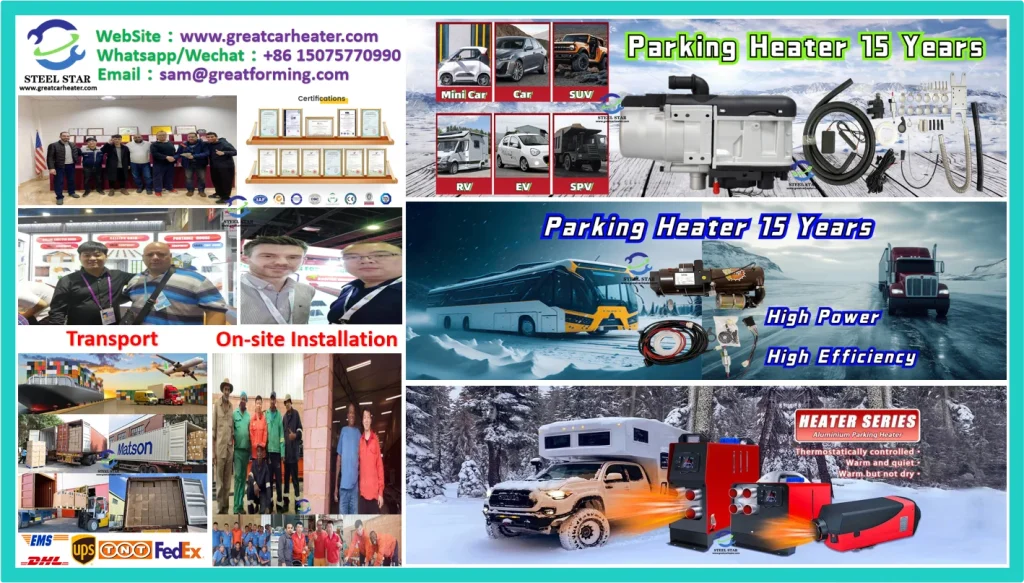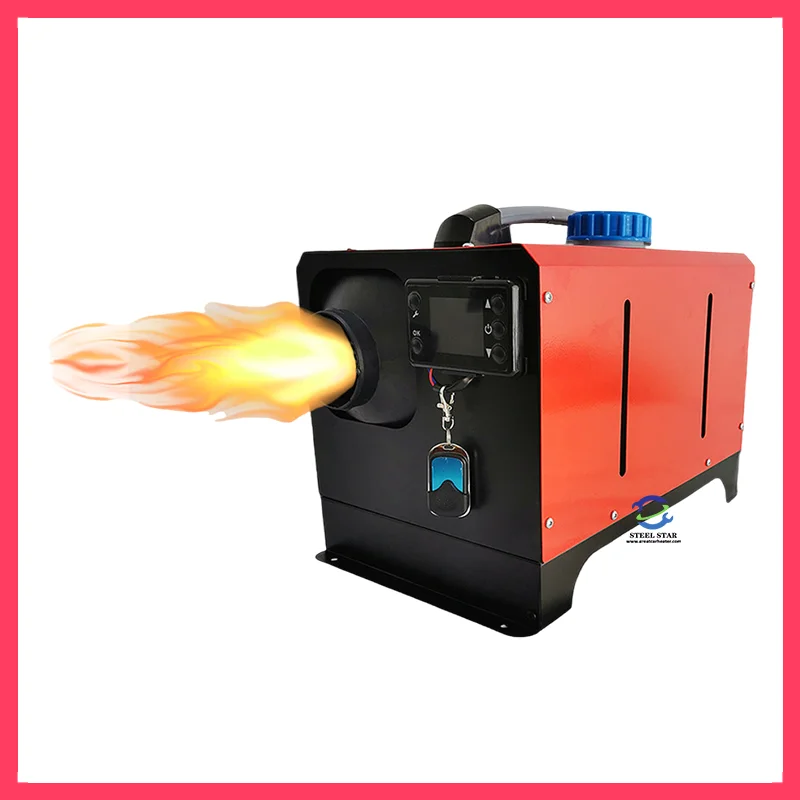If you are interested in the product and want more information, please leave your information .
Whatsapp : +86 15075770990
Wechat (China) : +86 15075770990
Email : sam@greatforming.com
Below is a brochure of our factory products, which can be viewed and downloaded.
The air parking heater is integrated and the fuel tank is embedded inside, which is convenient for installation and movement.
This is a very practical car accessory, especially in cold climates. Below, I’ll explain in detail its principles, functions, advantages and disadvantages, applicable scenarios, and purchasing recommendations.
1. What is an air parking heater?
As the name suggests, an air parking heater is a device that independently provides warm air to the driver’s cabin when the vehicle is turned off (parked). Its key feature is “independence”—it doesn’t rely on the vehicle’s engine. Instead, it has its own independent combustion and heating system, typically powered by fuel (gasoline or diesel, the same fuel as in the vehicle’s fuel tank) and a battery for electricity.
You can think of it as a super-cool, automated “fuel heater” installed in your car.
2. Working Principle
The process can be summarized as follows:
Starting: The heater is activated via a remote control, mobile app, or timer.
Fuel and Power Supply: The device draws a small amount of fuel from the vehicle’s fuel tank, while simultaneously consuming power from the vehicle’s battery.
Combustion and Heating:
The motor drives the fan and fuel pump.
Fuel is atomized in the combustion chamber, mixed with the incoming air, and ignited by the glow plugs, producing a stable flame.
A heat exchanger completely isolates the heat generated by combustion from the cool air entering the vehicle.
Air Supply and Exhaust:
Cold air is drawn in by the fan, heated by the outer wall of the heat exchanger, and blown into the cabin as clean, warm air.
Exhaust gases are discharged directly to the exterior of the vehicle through a separate, thin exhaust pipe. This is crucial for safety, as exhaust gases are completely isolated from the interior air.
Circulation and Temperature Control: The entire process is continuously circulated and monitored by an intelligent control system. Once the set temperature is reached, the system automatically reduces power or enters standby mode to save fuel and electricity.
3. Main Functions and Core Applications
Preheating the Cabin: This is the most important function. By running the heater 10-20 minutes before you get in, you can enter a warm cabin without having to endure a cold steering wheel and seats.
Windshield Defrost/Defog: Without starting the engine, the heated air from the heater quickly melts frost and fog from the windshield, saving valuable morning preparation time.
Assists Engine Warm-Up (Indirect Benefit): While it doesn’t directly heat the engine, a warm cabin means you don’t have to idle for extended periods to warm up the car, reducing engine wear and carbon deposits, and also being more environmentally friendly.
Energy Saving and Environmental Protection: Compared to idle warm-up (which is extremely inefficient, results in high fuel consumption, and produces high pollution), parking heaters offer higher fuel efficiency, lower overall energy consumption, and lower emissions.
4. Advantages and Disadvantages
Advantages:
Improved Comfort: Say goodbye to a cold cabin, significantly enhancing the winter driving experience.
Time Saving: Quickly defrosts and de-ices, eliminating waiting.
Engine Protection: Reduces wear and tear caused by cold starts and idling.
Relatively Safe: Exhaust gases are discharged outside, ensuring safe interior air quality.
Remote/Timer Control: High-tech, convenient, and fast.
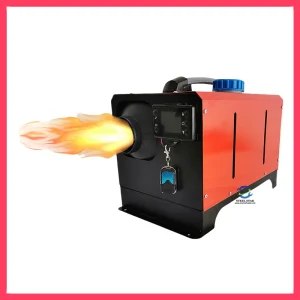
- Rated Voltage : 12V/24V/220V (Can be customized according to your needs)
- Power : 5KW/8KW/10KW(Can be customized according to your needs)
- Fuel Consumption : About 0.23L/Hour – 0.51L/Hour
- Ambient Temperature : -40°~80°
- Product Weight : Different Power, Different Weight
- Fuel Usage : Diesel
Accessories List
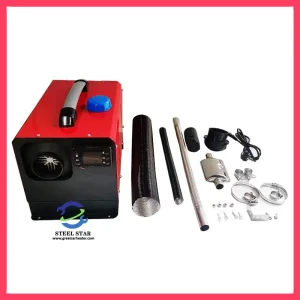
Schematic
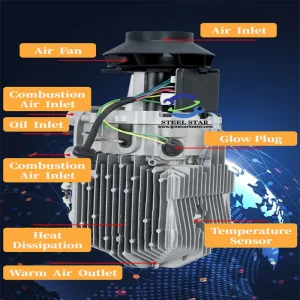
Disadvantages:
Price: Both the device itself and installation costs are significant, creating an additional expense.
Battery Drain: While the battery drain is low, if the battery is old or has been used for a long time, there is a risk of draining the battery and preventing the vehicle from starting (high-quality products have an automatic low-voltage protection function).
Fuel Drain: While more fuel-efficient than idling, it still consumes fuel.
Professional Installation Required: This involves modifications to the fuel line, electrical circuit, and exhaust pipe, and must be performed by a professional; otherwise, there are safety risks.
Suitable Users and Scenarios
Users in Cold Regions: Users in areas with persistently sub-zero winter temperatures, particularly in Northeast China, Northwest China, and Inner Mongolia.
Professional Drivers: Truck drivers and taxi drivers, for example, spend extended periods in their vehicles and need to keep their cars warm.
Families with Elderly and Children: Ensure the comfort and health of their family members when they enter the vehicle.
Outdoor Workers or Camping Enthusiasts: Provides reliable heating even when the vehicle is off.

Website:
www.greatcarheater.com (English)
www.russianheater.com (Russian)
www.spanishheater.com (Spanish)
